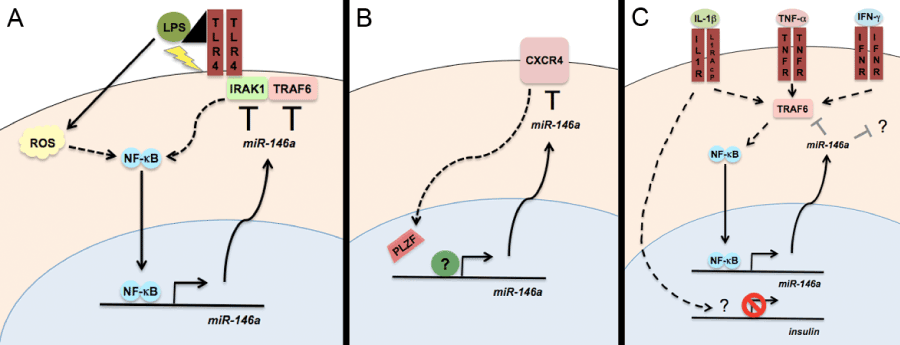
 |
| Figure 1: Activities of miR-146a in innate immunity, cell differentiation, and energy metabolism. (A) During an innate immune response, LPS activation of Toll-like receptor 4 (TLR4) recruits IRAK1 and TRAF6, which indirectly activate NF-κB. Upon entering the nucleus, NF-κB binds to and activates the transcription of miR-146a. Irak1 and Traf6 mRNA are then targeted by miR-146a for degradation. NF-κB may also be indirectly activated through reactive oxygen species (ROS). (B) In the cell differentiation events of megakaryopoiesis, transcription factor PLZF binds to and represses the miR-146a promoter, allowing for the translation of receptor CXCR4. When normal differentiation does not occur, unknown transcription factor(s) activate miR-146a, leading to the targeting and degradation of Cxcr4 mRNA. PLZF is displaced by an unknown mechanism when miR-146a is upregulated in these cells. (C) When insulin-secreting cells are exposed to IL-1β, TNF-α IFN-γ receptormediated recruitment of TRAF6 leads to the indirect activation of NF-κB and upregulation of miR-146a. IL-1β activity also results in the downregulation of the insulin promoter. Not all targets of miR-146a are known in these cells. Solid arrow denotes direct path; dashed arrow represents indirect pathway. |